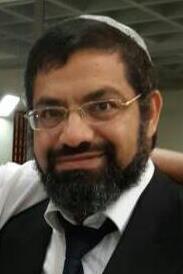For Honor and Splendor
הרב זכריה טובי
ראש הכולל
Parshat Tetzaveh opens with the pasuk: "Now you shall command Bnei Yisrael that they shall take for you pure, pressed olive oil for illumination." (Shemot 27:20) The parsha continues with the priestly garments: "You shall make holy vestments for Aharon your brother, for honor and splendor." (Shemot 28:2) What is the connection between olive oil and the priestly vestments? The parsha's conclusion, which deals with the incense Altar, is also difficult. The incense Altar is one of the vessels of the Mishkan, which were all listed in Parshat Teruma, so why is this Altar mentioned after the holy vestments?
The Malbim already raised this difficulty: "Why did [the Torah] interrupt with this commandment (of pure olive oil) between the design of the Mishkan and the design of the priestly vestments?" He answers that the olive oil serves as a metaphoric introduction to the priestly vestments. This is because the priestly vestments allude to the purity of midot and attitudes, which serve as the soul's vestments, as Chazal write in the Midrash: "Ephod – atones for idol worship; breeches – for idolatry; tunic – for bloodshed; sash – for the heart's contemplations, turban – for the haughty." (Yalkut Shimoni Tetzaveh 247:380)
King Shlomo writes: "Let your garments always be white and your head never lack oil." (Kohelet 9:8) This is seemingly difficult. What is the connection between oil on the head and white garments? White garments indicate the soul's vestments that are supposed to be white and clean of any evil attribute. It also says: "A man's soul is the lamp of Hashem." (Mishlei 20:27) A lamp is contrived of two parts: the oil – which corresponds to the soul, and the wick – which corresponds to the body. Together, they create the flame –which is the Torah. The more the oil is clean and pure – the more beautiful the flame will light. The finer the wick – i.e., the more a person's body will readily accept purity, the more the light will continue to shine.
The same idea is written regarding the priestly vestments: "You shall make holy vestments for Aharon your brother, for honor and splendor." What is the honor? The Baal HaMaor writes that in many places in Tanach the soul is called honor, as it says: "For this reason my heart rejoices and my honor [soul] is elated" (Tehillim 16:9); "Awake, my honor" (Tehillim 57:9); "So that my honor might sing to you." (Tehillim 30:13) Thus, a person's soul is the honor. Since the vestments symbolize the midot, the garments of the soul, the role of the priestly vestments is to reveal the inner purity of the Kohen.
The Gemara writes:
"Honor it [Shabbat] by not engaging in your own affairs." (Yeshaya 58:13) "Honor it" – that your Shabbat garments should not be like your weekday garments, as R. Yochanan called his clothing, "my honors."
A person who changes his clothes in honor of Shabbat reveals Shabbat's honor; by doing he himself becomes honorable.
What does "splendor" mean? It is inner beauty, as it says: "Awaken, awaken! Don your strength, O Zion; don your garments of splendor, O Yerushalayim, the holy city." (Yeshaya 52:1) Yerushalayim's splendorous garments are the revelation of its inner holiness. It says about a bridegroom: "Like a bridegroom who exalts [himself like a kohen] with splendor, like a bride who bedecks herself with jewelry." (Yeshaya 61:10) What connection is there between the bridegroom and the kohen? The pasuk is talking about the midot and the pure emotional characteristics of the bridegroom, who is like a kohen garbed with the priestly vestments that are for "honor and splendor."
We can now understand why our parsha concludes with the incense Altar. All the vessels of the Mishkan were designed to perfect Am Yisrael, and the Mishkan's holiness was meant to reveal Am Yisrael's holiness. The prophet Yechezkel says in the Haftarah: "You, Son of Man! Tell the House of Israel the Temple." (Yechezkel 43:10) It says, "the House of Israel," and not "to the Children of Israel," to teach that the Temple is Am Yisrael itself. The Mishkan was built to perfect Am Yisrael. Just like there is an outer Altar, appropriately named because it comes to fix the exterior, the body – so, too, there is also the incense altar, which is meant to fix the soul.
This is the connection between the opening and the conclusion of the parsha. The lamp (oil and wick) symbolizes the body and soul of the person, and the outer Altar and incense Altar symbolize the body and soul of Klal Yisrael. The Kohen Gadol, dressed in vestments of honor and splendor, enters the Kodesh HaKodashim on Yom Kippur to burn incense in order to purify the souls of Am Yisrael, which is the pinnacle of the Mishkan's construction. This is alluded to in the pasuk: "When Aharon kindles the lamps in the afternoon he shall bring it up in smoke, continual incense before Hashem, for your generations." (Shemot 30:8)
קוד השיעור: 3701
לשליחת שאלה או הארה בנוגע לשיעור:



.jpg)

